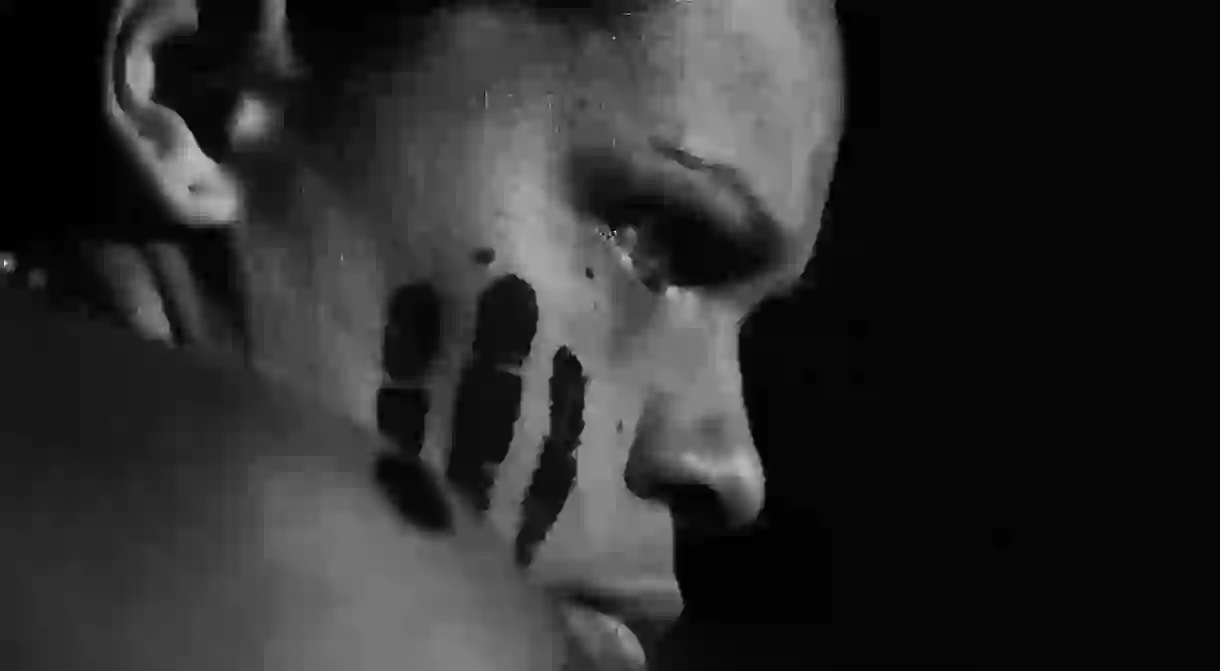A Guide To Australia's Indigenous Languages

One of the biggest misconceptions about Australia is that there’s one uniform Aboriginal language. In reality, there are literally hundreds of dialects unique to each corner of this mammoth continent that have been spoken for tens of thousands of years — and have survived despite the enormous threat posed by British colonisation. Read on for a basic introduction to Australia’s incredibly diverse Indigenous languages.
History
Before the British arrived in the late 18th Century, there were around 300 different Indigenous languages belonging to 28 language families, meaning groups of languages that share similarities. Each community — the Aboriginal people of the mainland, as well as groups from islands like Tasmania and the Torres Strait Islands — maintained their own dialect.
The huge majority of Indigenous languages belong to the Pama-Nyungan family, covering the bulk of the continent’s territory, but there’s also a number of different language families found in northeast Western Australia and the top of the Northern Territory. Despite this diversity, there are also deep relationships between the languages after thousands of years of influence on each other.

One of the main features of Australia’s Indigenous languages is ‘avoidance speech’, which means languages share common words, grammar and pronunciation but reserve a specific lexicon for closer relatives. These intimate dialects were and still are a key way of cultivating a sense of family and community within groups of Indigenous people.
Settlement
By the late 18th Century, around 250 social groups had their own distinct language, most with roughly 3000-5000 speakers each — but British settlement in 1788 had a devastating effect on Indigenous languages, with many disappearing within decades. Language is a key way of maintaining cultural identity and this came under threat from European contact, particularly education and employment in these new British colonies. Tasmania — isolated from the mainland — was a particularly shameful example of ethnocide.
The Stolen Generations — a period during the 20th Century when Aboriginal and Torres Straight Islander “half-caste” children were forcibly removed from their homes by the government and placed with agencies and church missions — is another disgraceful chapter in Australia’s history. Kids were punished for speaking their native tongue rather than English, which decimated the ability to hand down languages from generation to generation given an estimated 10-30% of mixed-race Indigenous children were ripped away from their families.

Today, only about 120-150 languages remain in daily use, and only a handful aren’t considered endangered as generations of Elders pass away. That small group of dialects that aren’t at risk are typically found in isolated communities in remote Central, Western and Northern Australia. Arrente — spoken around Alice Springs in Central Australia — and Yolngu — spoken in north-east Arnhem Land in the Northern Territory — each have around 3000 speakers, while most surviving languages have much fewer.
Survival
Many communities are working hard to ensure their languages do not disappear, maintaining a key aspect of the oldest surviving culture on the planet. Schools are beginning to adopt Indigenous language courses to bring these traditional tongues into the classroom, many universities offer Aboriginal language courses, and Indigenous languages have become more visible in the media in recent years, improving non-Indigenous Australians’ awareness of them.
https://www.youtube.com/watch?v=9Vzf9BAVGZc
The Australian Indigenous Languages Collection was established in 1981 to preserve written material in Aboriginal and Torres Strait Islander dialects. It now contains 4300 titles — books, dictionaries, works of fiction, learning materials, translations of the Bible and even children’s books — that cover most of the continent’s hundreds of dialects. AUSTLANG provides a database of these languages, too, and the National Film and Sound Archive’s ‘The Sounds of Australia’ contains recordings of 40 endangered languages.
The mainstream Australian vernacular also contains many words with an Indigenous origin. Dingo, wombat and boomerang all come from dialects around Sydney, billabong and kookaburra stem from the Wiradjuri people in Central New South Wales, and kangaroo originated in Northern Queensland. Even Canberra, Australia’s capital city, is named after a Ngunnawal word for ‘meeting place’.













